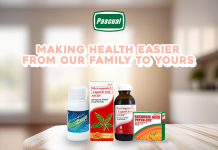Is your child’s colic a sign of food allergy? Not likely, In fact very few cases of colic are actual signs of food allergy. Genetics is usually the deciding factor. If the parents have food allergy then there is a 40 – 70% chance of the child being allergic to these foods as well. Yet even when neither parent is allergic to foods, there is still a chance that the child will be.
The allergic reaction is actually a learned response. During infancy, the immune defenses are learning which molecules are “friends” and which are “foes.” With the allergic reaction, certain food proteins are identified by the immune system as hostile invaders. This is genetically coded and not because of parenting methods. The immune system produces antibodies designed to recognize and attack that food protein (a process known as sensitization). These antibodies remain in the cells of baby’s skin, respiratory system, and gastrointestinal tract, ready to react the next time baby is exposed to that food.
The symptoms of a typical food-allergy reaction appear within minutes or hours of exposure to the food. These symptoms may include:
- Skin irritations such as rashes, swelling, or hives.
- Respiratory problems including congestion, coughing, sneezing, wheezing, or dangerous swelling of airways.
- Gastrointestinal distress, including nausea, vomiting, excessive gas, and loose stools that may be tinged with blood.
If the allergic reaction is severe it is best to consult a doctor. Any respiratory inflammation should mandate a trip to the doctor.There are several things you can do to minimize the development of food allergies.
- Breastfeed for as long as possible (breast milk is the least likely to provoke an allergic reaction).
- When breastfeeding, Watch your diet carefully because food proteins pass to your infant through your breast milk. A change in your diet with an excessive intake of high risk foods can affect the baby.
- Choose a formula with care; be sure to seek advice from your doctor. Some formulas are less likely than others to prompt an allergic reaction.
- When feeding solids, introduce new foods one at a time so you can observe your baby’s reaction.
- Keep a record of each new food and your baby’s reaction to it.
- Save high-risk foods* until after baby’s second birthday.
*High risk foods are those that the parents are allergic to and those which are more likely to cause reactions.
Certain foods are more likely than others to cause a reaction in infants. That’s why the following foods should be introduced only carefully and gradually after baby is 1 year old:
- Cow’s milk
- Eggs
- Honey
- Nuts, legumes, and seeds (particularly peanuts and soy)
- Wheat
- Corn
- Citrus fruits and juices
- Seafood
Fortunately, children tend to outgrow most of their sensitivities to food by the age of 3. However, two notable exceptions to this rule are peanuts and fish; these sensitivities usually last a lifetime.Do seek a doctor’s advice: If your child does have food allergies, it is important to consult a doctor about the best way to handle the symptoms and manage the allergies over time.





